Today, astronauts and cosmonauts working together on the ground and aboard the International Space Station is commonplace. But during the Cold War in the 1960s and early 1970s, meetings between American astronauts and then-Soviet cosmonauts remained rare events, often taking place when they happened to be attending the same international venue such as a scientific conference or an air show. In May 1962, Soviet cosmonaut Gherman S. Titov, who completed the one-day Vostok 2 mission the previous August, visited the United States on a 12-day tour. During his stay in Washington, D.C., astronaut John H. Glenn , the first American to orbit the Earth aboard Friendship 7 a little more than two months earlier, served as his host, marking the first meeting between an American astronaut and a Soviet cosmonaut. The two also met with President John F. Kennedy at the White House.
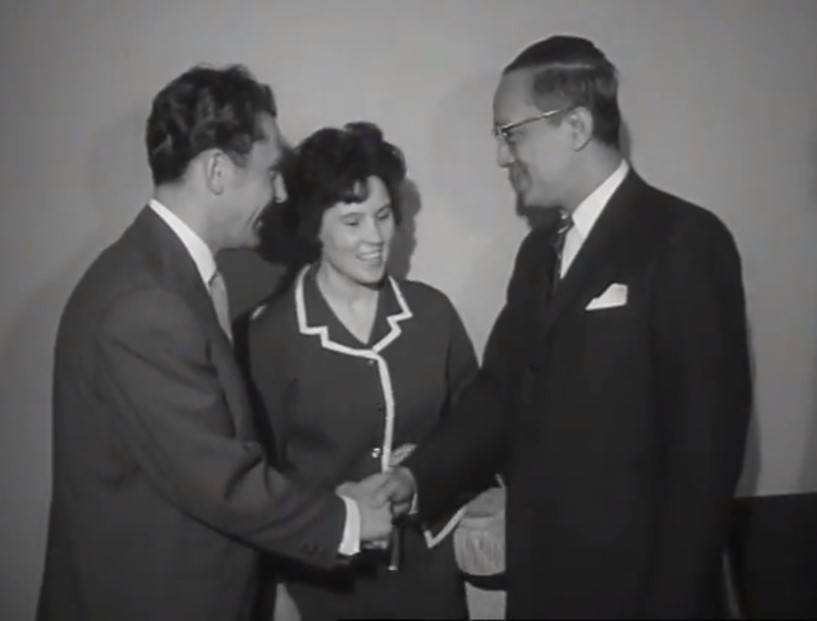
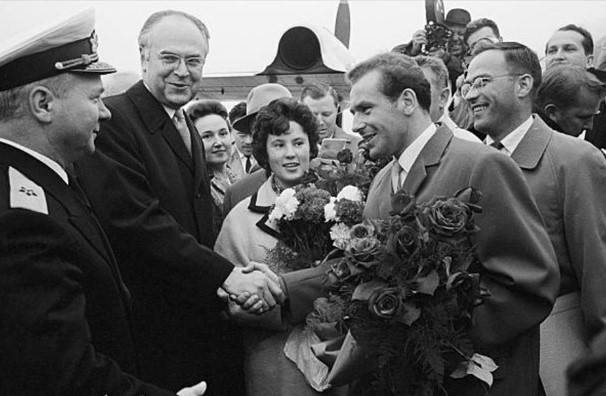
Left: Soviet cosmonaut Gherman S. Titov, left, and his wife Tamara meet with U.N. Secretary General U Thant in New York. Right: Soviet Ambassador to the United States Anatoli F. Dobrynin, second from left, greets Titov and his wife at Washington’s National Airport.
Titov arrived in New York on April 29, 1962, accompanied by his wife Tamara and Nikolai P. Kamanin, director of the Cosmonaut Training Center, today named after Yuri A. Gagarin, in Star City on the outskirts of Moscow. At the United Nations, they met with Director General U Thant and Titov held a press conference, answering questions about his one-day orbital flight, at the time the longest human space mission. They toured the sights and watched the film “Flight of a Man to the Moon” at Radio City Music Hall. On May 2, they flew to the nation’s capital, where Soviet Ambassador Anatoliy F. Dobrynin met them at Washington’s National Airport. That evening, the Titov and his wife Tamara attended a showing of the film “West Side Story.”
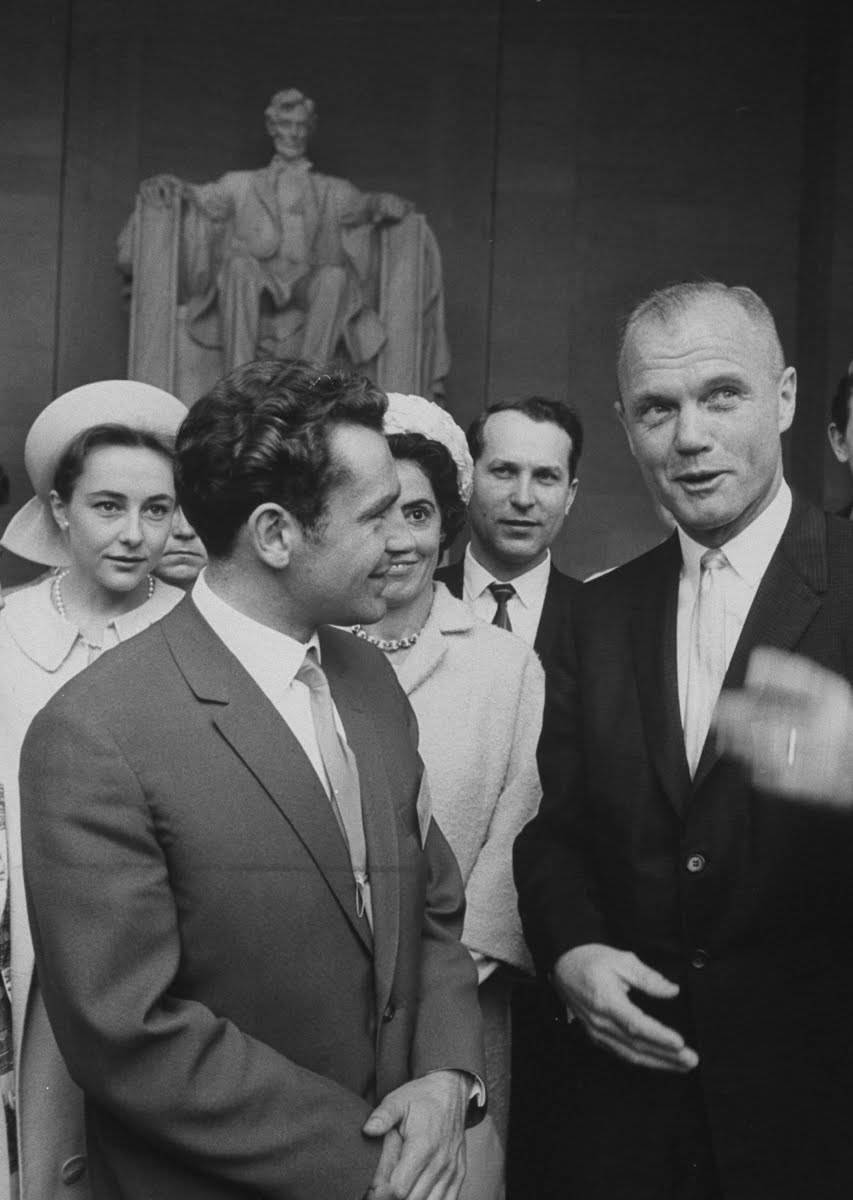
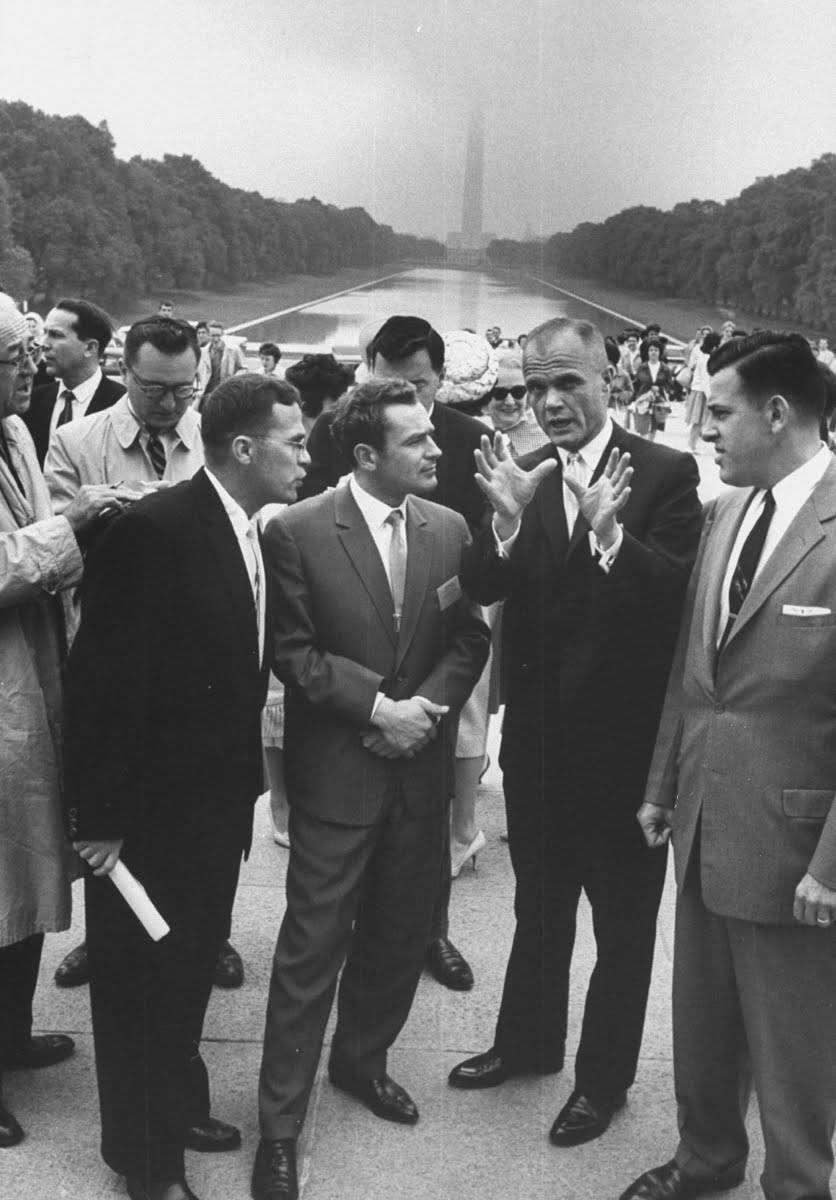
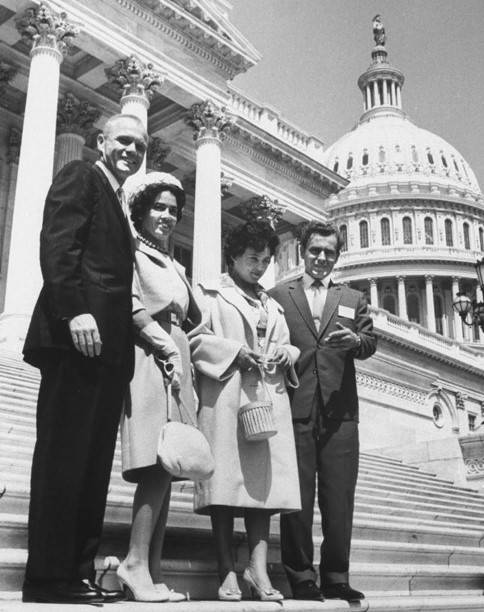
Left: Astronaut John H. Glenn, right, shows Soviet cosmonaut Gherman S. Titov the Lincoln Memorial in Washington, D.C. Middle: Titov and Glenn at the Reflecting Pool, with the Washington Monument in the background. Right: John and Annie Glenn and Tamara and Gherman Titov on the steps of the U.S. Capitol.
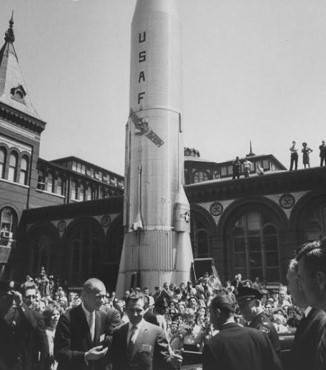
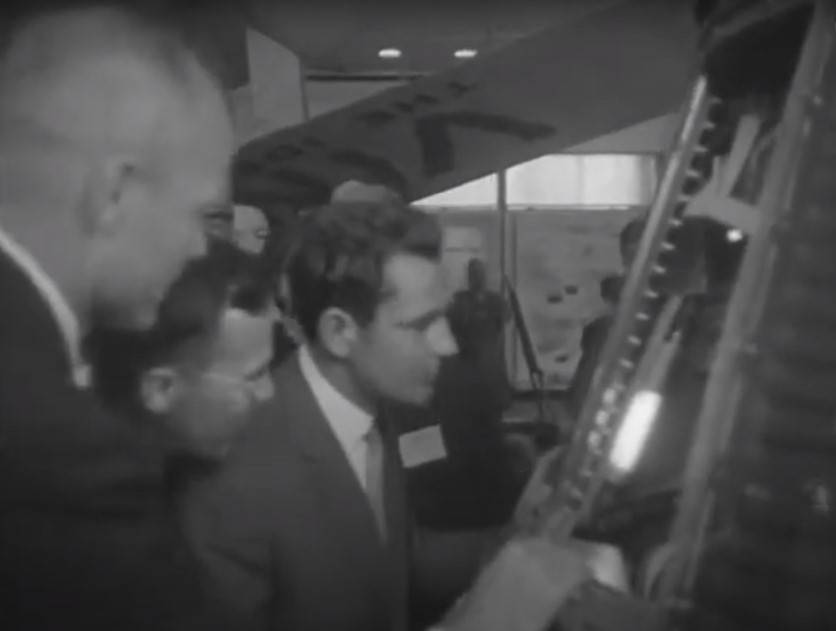
Left: Outside the Smithsonian Institution’s National Air Museum, astronaut John H. Glenn, left, and cosmonaut Gherman S. Titov pose in front of an Atlas missile, similar to the rocket Glenn used to launch on his orbital mission. Right: Inside the museum, Glenn, left, describes Alan B. Shepard’s Freedom 7 Mercury capsule.
The Titovs spent the next two days in Washington, D.C., with Glenn and his wife Annie serving as hosts. They began the tour of the nation’s capital at the Lincoln Memorial, followed by the Washington Monument, the National Archives – where Titov appeared impressed with the Declaration of Independence – and the U.S. Capitol. At the Smithsonian Institution’s National Air Museum, the forerunner of today’s National Air and Space Museum, they viewed a Redstone and an Atlas rocket and astronaut Alan B. Shepard’s Freedom 7 Mercury spacecraft.
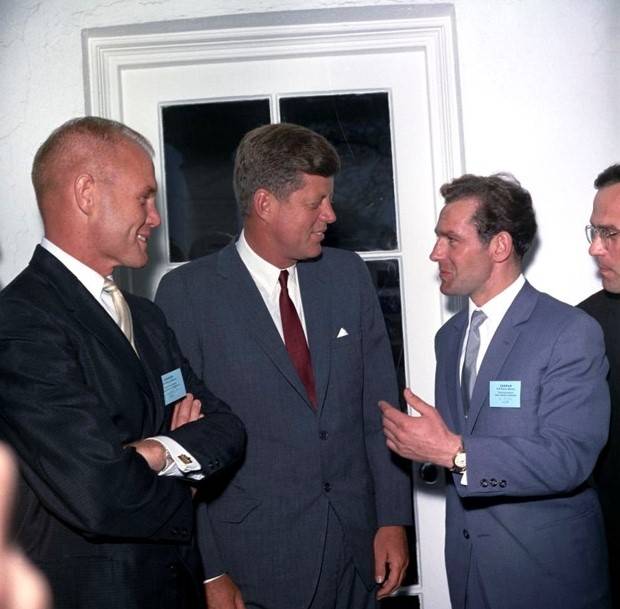
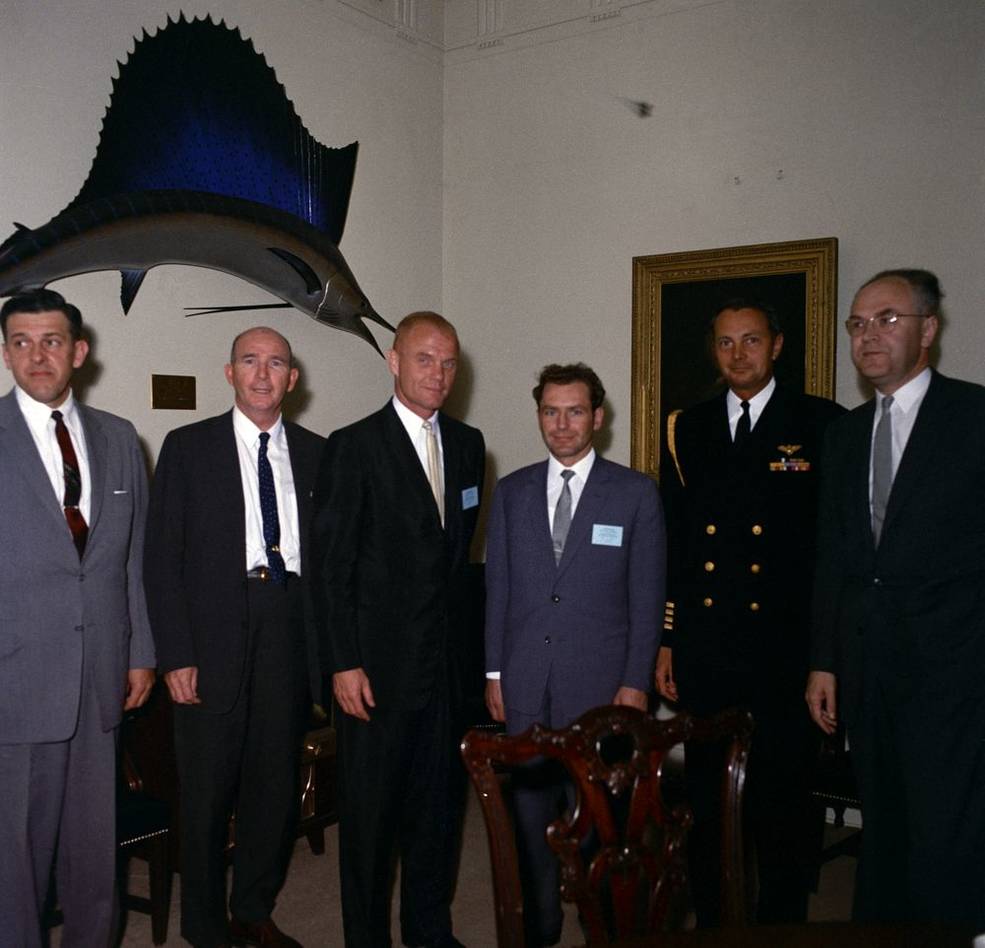
Left: On the White House portico, NASA astronaut John H. Glenn, left, and
President John F. Kennedy chat with Soviet cosmonaut Gherman S. Titov.
Right: Posing in the Fish Room of the White House, are interpreter
Walter Skuby, left, Special Assistant to the President David F.
Powers, Glenn, Titov, Naval Aide to the President Tazewell T.
Shepard, and Soviet Ambassador to the United States Anatoli F.
Dobrynin. Image credits: Courtesy JFK Library.
From the Smithsonian, they drove to the White House, where they met briefly with President John F. Kennedy, who less than a year earlier committed the nation to landing a man on the Moon and returning him safely to Earth before the end of the decade. Glenn and Titov toured the White House, meeting with government officials.
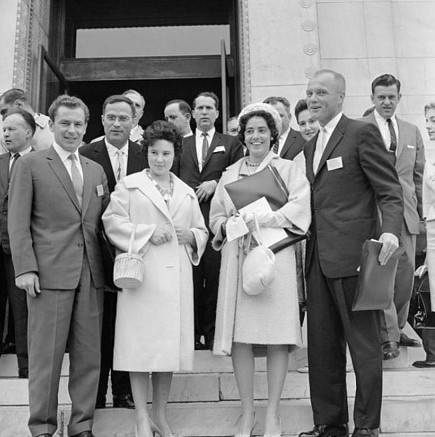
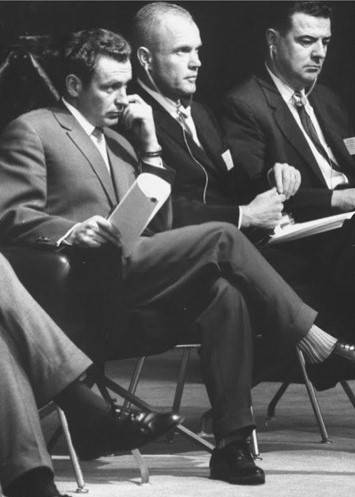
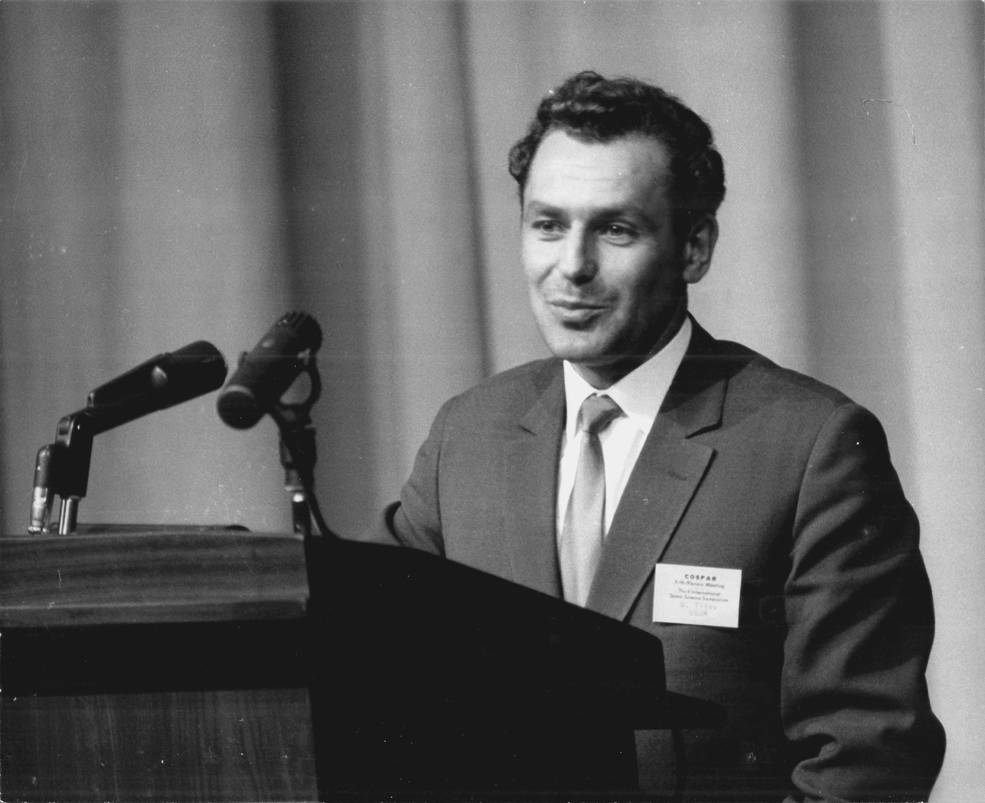
Left: Soviet cosmonaut Gherman S. Titov, left, and his wife Tamara with American
astronaut John H. Glenn and his wife Annie on the steps of the National Academy
of Sciences. Middle: Titov, left, and Glenn listen to speeches at the Committee
on Space Research (COSPAR) meeting of the International Council of Scientific
Unions. Right: Titov giving his presentation at the COSPAR meeting.
At the Committee on Space Research (COSPAR) meeting of the International Council of Scientific Unions, an organization that grew out of the close cooperation that prevailed during the International Geophysical Year of 1957-1958, Glenn and Titov both gave presentations about their respective missions. At the conclusion of the session, they held a joint news conference. During his presentations and press conferences, reporters, scientists, and even Glenn himself, displayed frustration at Titov’s often evasive answers about his spacecraft, rocket, and mission. At the time, the Soviet Union maintained a strict veil of secrecy over its space program, and that extended to Titov’s goodwill visit as well. This contrasted sharply with NASA’s policy of openness regarding its spaceflight program.
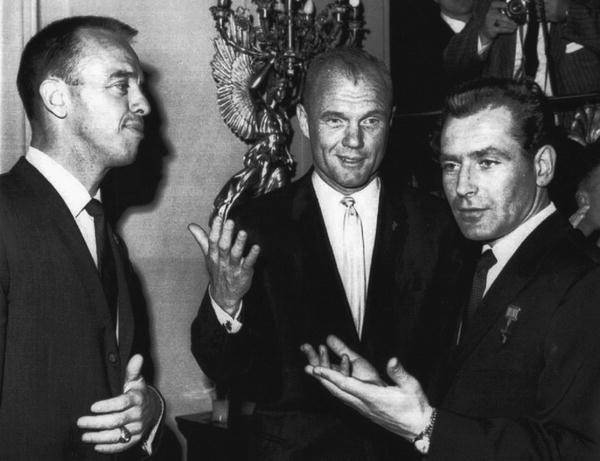
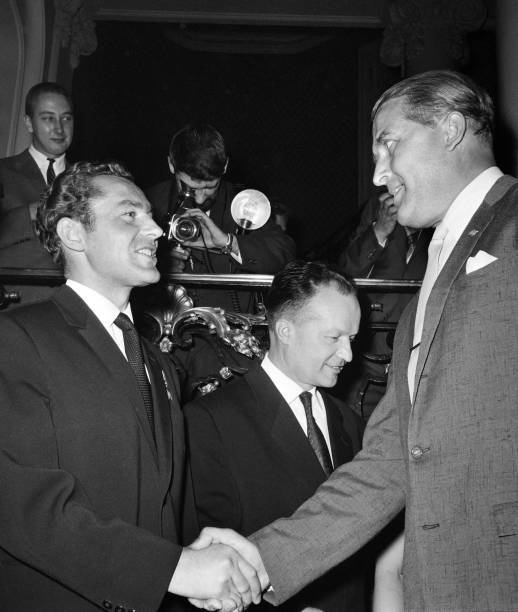
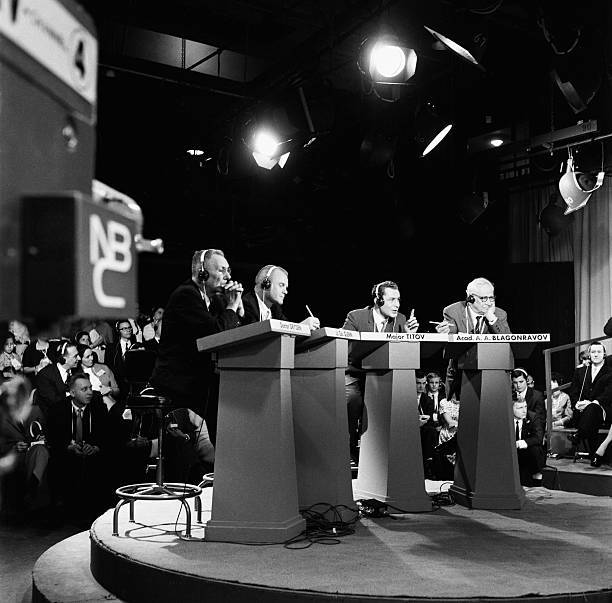
Left: American astronauts Alan B. Shepard, left, and John H. Glenn and Soviet
cosmonaut Gherman S. Titov at a reception at the Soviet Embassy in Washington,
D.C. Image credit: Courtesy UPI. Middle: Titov meets American rocket designer
Wernher von Braun at the Soviet Embassy reception, with Cosmonaut Training
Center Director Nikolai P. Kamanin in the background. Right: Panel
consisting of NASA’s Deputy Administrator Hugh L. Dryden, Glenn,
Titov, and Anatoli A. Blagonravov of the Soviet Academy of
Sciences on the NBC program “The Nation’s Future.”
Image credit: NBC.
At a reception at the Soviet Embassy, Titov met astronaut Shepard and designer of the Saturn family of rockets Wernher von Braun. He also insisted on going to Glenn’s house in Arlington, Virginia, for a hastily arranged barbecue. During the hurried and enthusiastic preparations, Glenn nearly set fire to his house. That evening, Glenn and Titov taped an episode of the NBC show “The Nation’s Future,” moderated by Edwin Newman, with the theme “The Challenge of Outer Space.” NASA Deputy Administrator Hugh L. Dryden and Anatoli A. Blagonravov of the Soviet Academy of Sciences appeared with Glenn and Titov on the show that aired on May 6. Dryden and Blagonravov had met in March 1962 for the first in a series of discussions about possible future collaboration in space between the two space-faring nations. Although the Soviets’ visit was intended as a goodwill tour, they also used the opportunity to learn about the American human spaceflight program. Cosmonaut Training Center Director Kamanin in particular hoped to learn about America’s future plans in space. He incorrectly inferred that the U.S. had plans to select female astronauts, with the first flight of a woman occurring as early as the second half of 1962. This erroneous assumption led the Soviets to select their first group of female cosmonauts and culminated with the flight of Valentina V. Tereshkova as the first woman in space in June 1963.
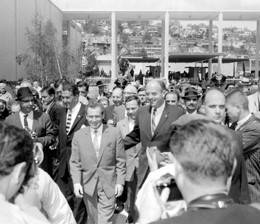
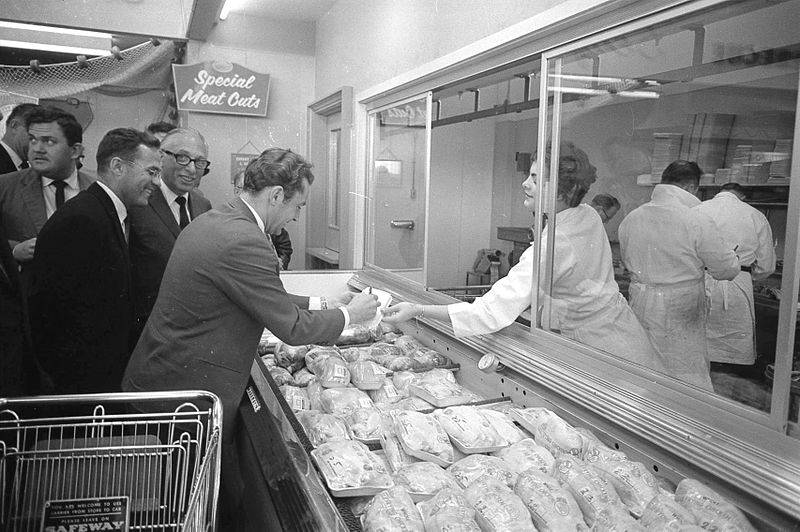
Left: Titov, left, on a tour of the World’s Fair in Seattle.
Right: Titov gives an autograph at a supermarket in San Francisco.
From Washington, D.C., Titov and his entourage flew to Seattle to experience the Century 21 Exposition, also known as the World’s Fair, where they saw Glenn’s Friendship 7 capsule on display. They visited San Francisco, including stops at a supermarket and the University of California at Berkeley campus, before returning to New York, where Titov sat for an interview with “Seventeen” magazine. In nearby New Jersey, he visited a Ford auto plant and Princeton University. They returned to Moscow on May 12. During the 12-day tour, Titov held 20 press conferences and delivered eight speeches.
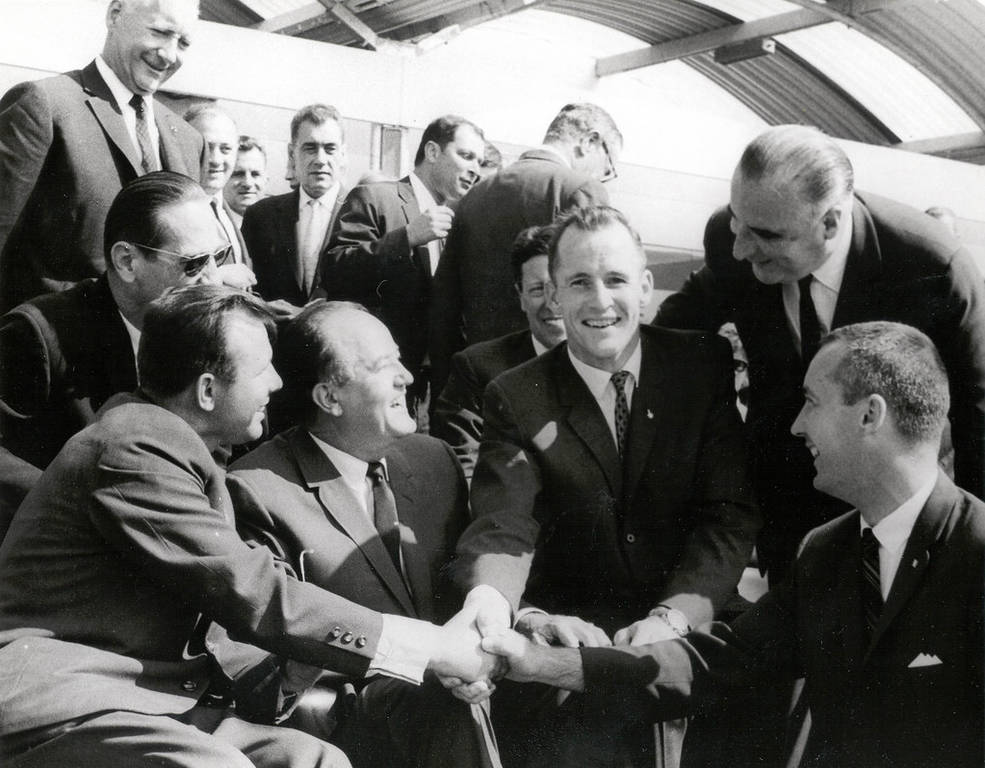
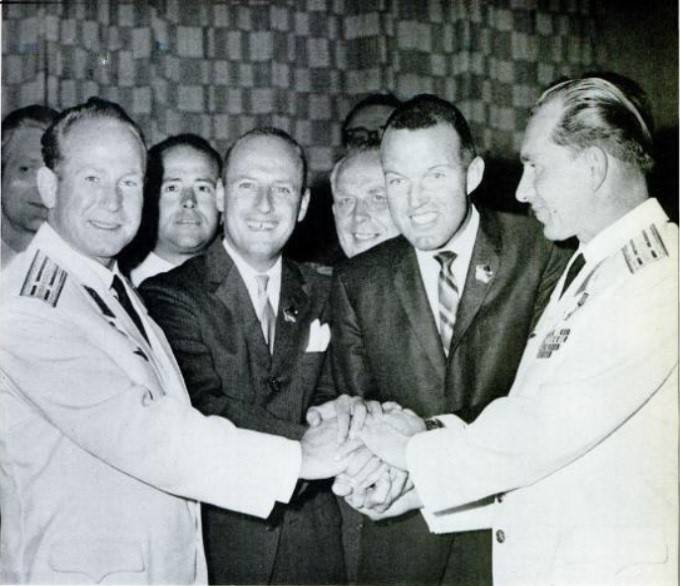
Left: At the Paris Air Show in June 1965, Soviet cosmonaut Yuri A. Gagarin,
left, meets American astronauts Edward H. White and James A. McDivitt, as
Vice President Hubert H. Humphrey and French President Georges Pompidou
look on. Right: Soviet cosmonaut Aleksei A. Leonov, left, American
astronauts Charles “Pete” Conrad and L. Gordon Cooper, and cosmonaut
Pavel I. Belyayev at the International Astronautical Congress
in Athens in September 1965.
Meetings between astronauts and cosmonauts remained infrequent events throughout the 1960s, usually taking place during international meetings or exhibitions, such as the Paris Air Show in June 1965 where Gemini IV astronauts James A. McDivitt and Edward H. White met Soviet cosmonaut and first person in space Yuri A. Gagarin. In September 1965, during the Athens stop on their postflight goodwill tour, Gemini V astronauts L. Gordon Cooper and Charles “Pete” Conrad attended the 16th International Astronautical Congress (IAC) and met with the crew of Voskhod 2, Soviet cosmonauts Pavel I. Belyayev and Aleksei A. Leonov, who completed the first spacewalk six months earlier. In July 1969, Frank Borman made the first visit of an American astronaut to the Soviet Union, two weeks before the first Moon landing. That trip seemed to break the ice, as cosmonauts and astronauts began making reciprocal visits. Three months after Borman’s trip, cosmonauts Georgi T. Beregovoi and Konstantin P. Feoktistov toured the United States, including a visit to the Manned Spacecraft Center (MSC), now NASA’s Johnson Space Center in Houston. In May 1970, it was Neil A. Armstrong’s turn to take a goodwill tour of the Soviet Union. While at the Gagarin Cosmonaut Training Center, the Soviets launched Andriyan G. Nikolayev and Vitali I. Sevastyanov aboard Soyuz 9 on a then record-setting 18-day mission. Four months after their return to Earth, Nikolayev and Sevastyanov spent 10 days visiting the United States, including a stop at the MSC. While they toured the U.S., a NASA delegation met with their Soviet counterparts in Moscow to discuss possible future cooperation in human space flight, the initial step that led to the first joint docking in space less than five years later. Two weeks earlier, Nikolayev and Sevastyanov and cosmonaut Boris B. Yegorov held an unplanned meeting with Apollo 13 astronauts James A. Lovell, John L. “Jack” Swigert, and Fred W. Haise, along with McDivitt, then the Apollo Program manager, while all attended the 21st IAC in Konstanz, Germany. The signing of the May 1972 agreement on the Apollo-Soyuz Test Project led to not only more goodwill visits but to joint training of American and Soviet crews and the famous July 1975 handshake in space.


























